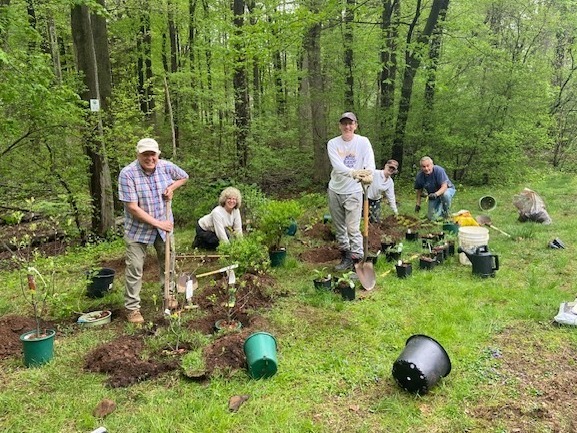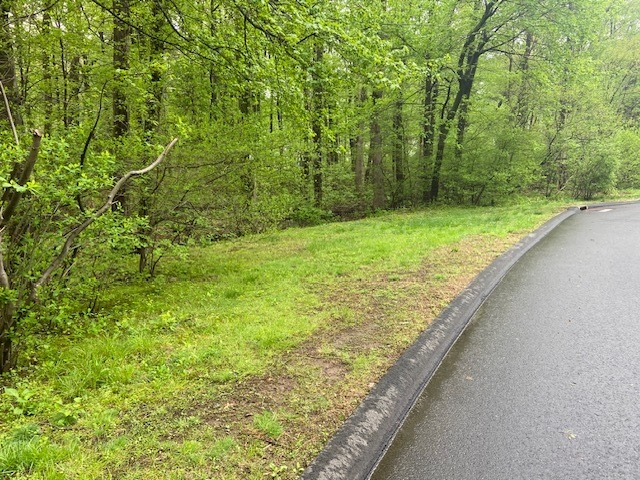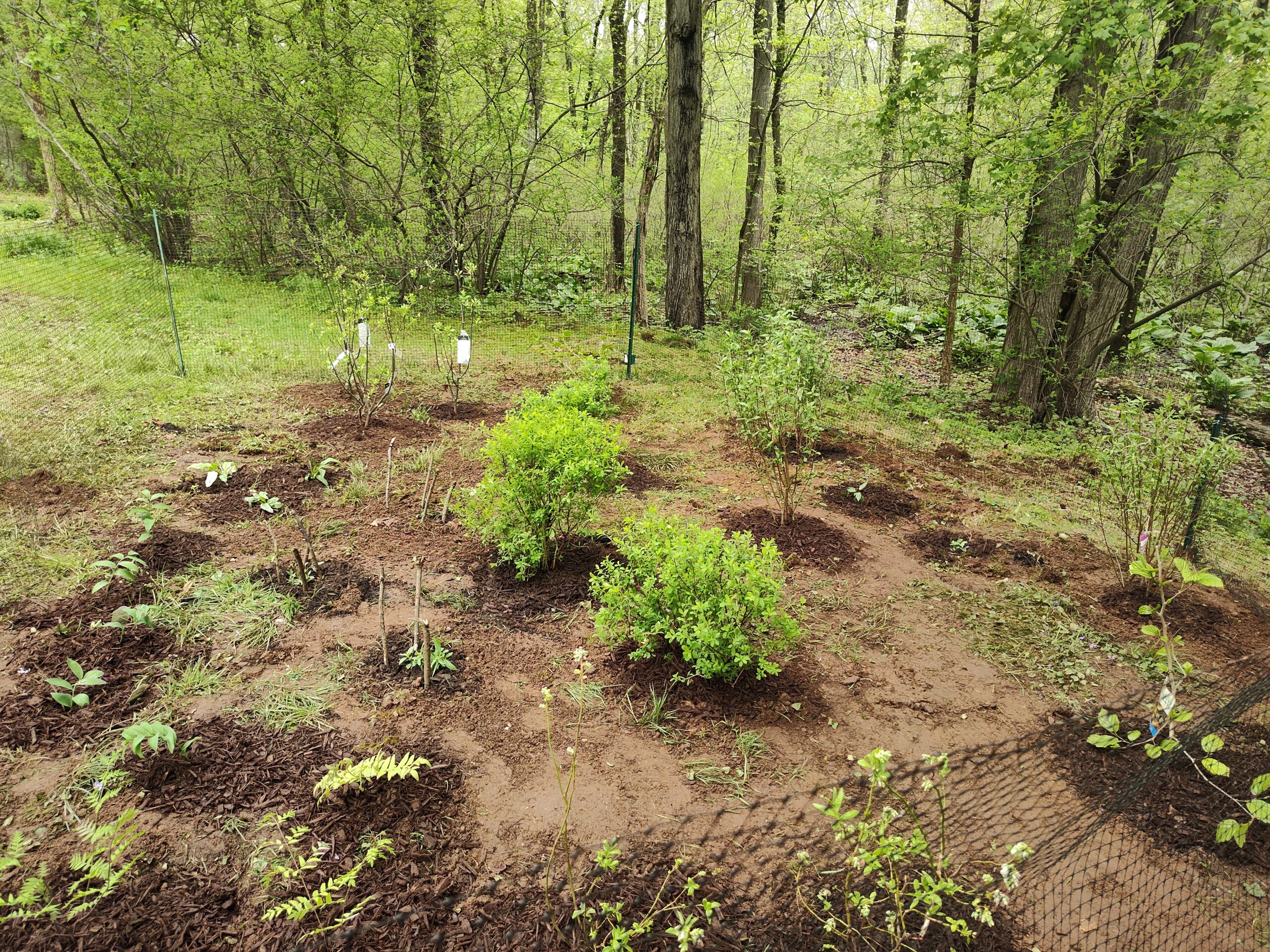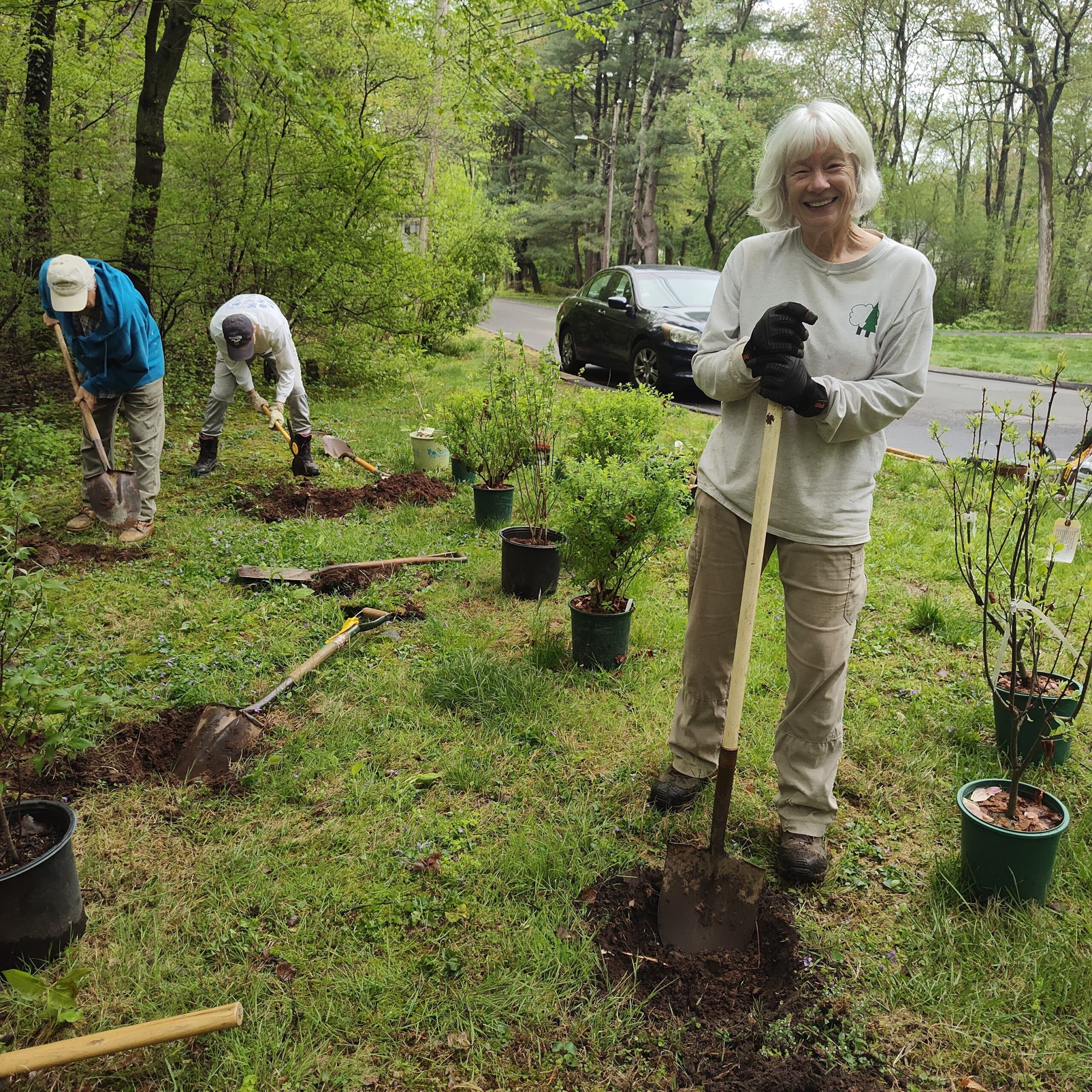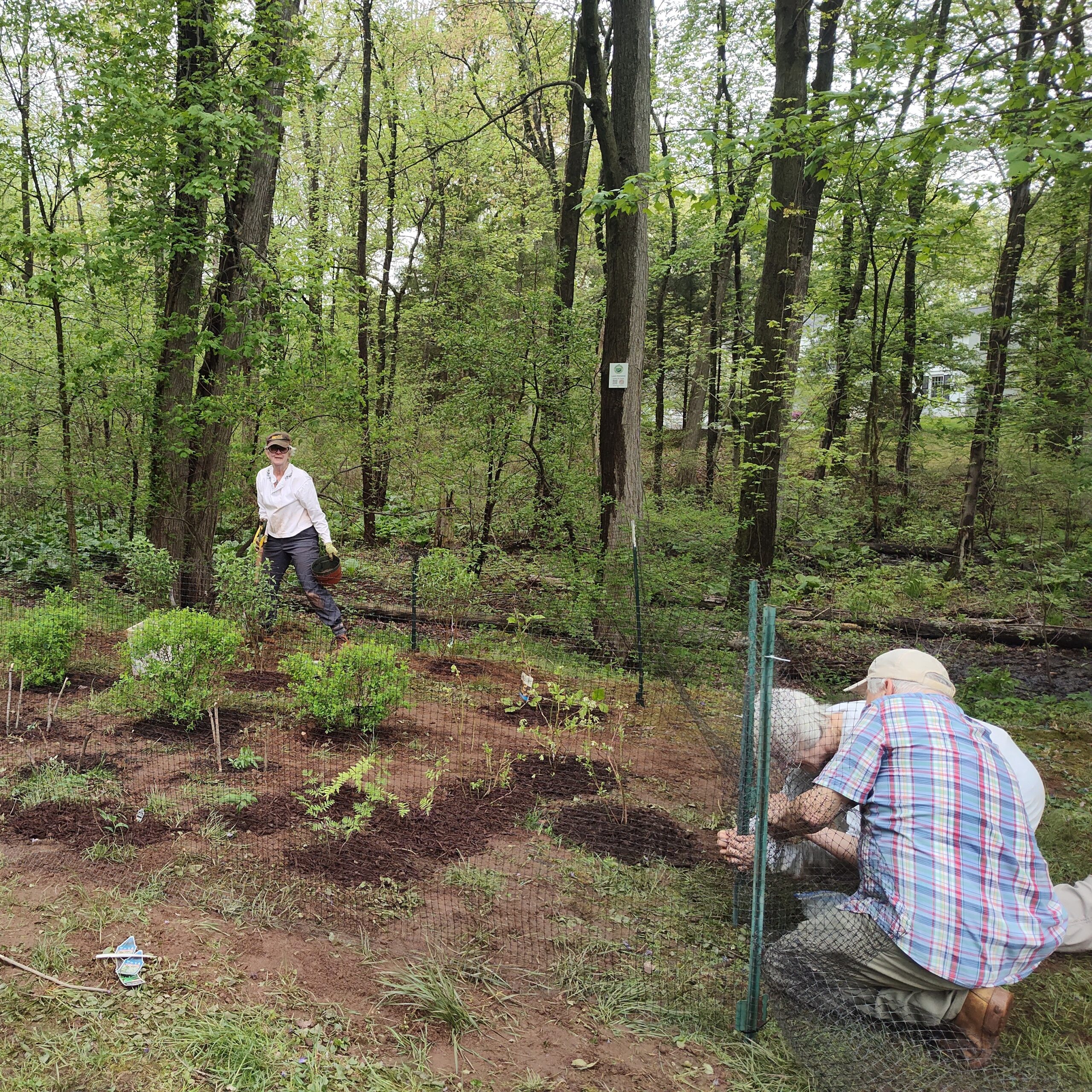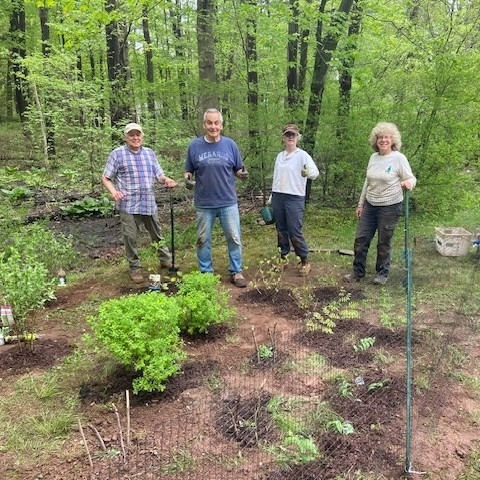A dedicated group of six volunteers gathered on a gray Sunday morning in early May 2025 to bring the vision to life. Armed with shovels, wheelbarrows, pickaxes, and even a battery-operated root cutter, they planted eight species of plants.
Despite rocky soil and stubborn tree roots, the team made quick work of the project, digging, planting, and mulching 26 plants in just three hours. Each species was chosen to attract and support bees, butterflies, moths, hummingbirds, insects, and other vital pollinators – many of which are in decline due to habitat loss, pesticides, and climate change. The plants, which include witch hazel, purple coneflower, and winterberry among others, were funded by a $500 grant from the Hartford Audubon Society.
The preserve, located at 12 Clark Drive, West Hartford, has a history rooted in community action. In 2008, nearby residents pooled resources to purchase and donate the land to protect it from future development. Now, more than 15 years later, that same spirit of stewardship is thriving and inspiring others to reimagine what a small patch of land can do.

